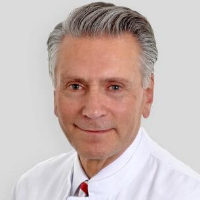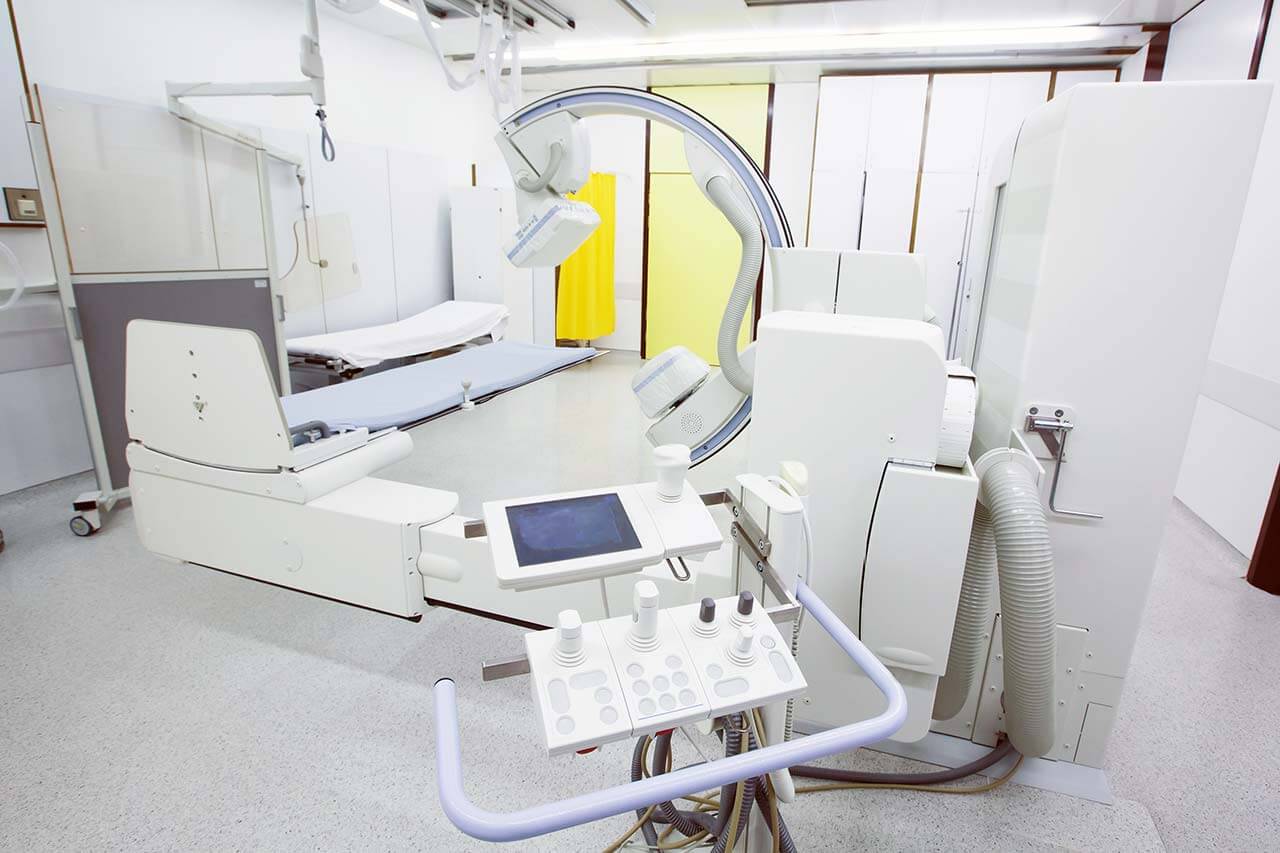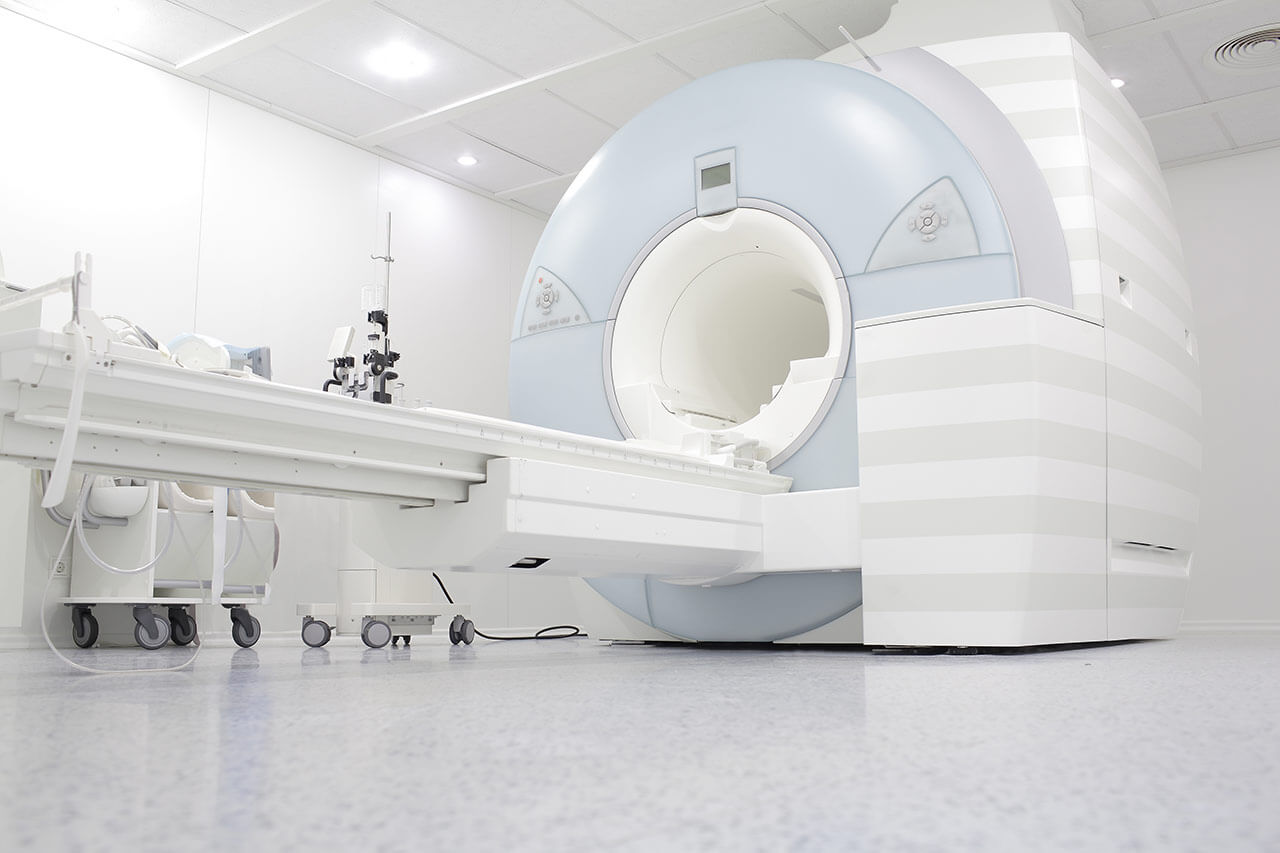
The program includes:
- Initial presentation in the clinic
- clinical history taking
- review of medical records
- physical examination
- general neurological examination
- neuropsychological tests:
- electroneuromyography (ENMG)
- laboratory tests:
- complete blood count
- inflammatory indicators (CRP, ESR)
- indicators of blood coagulation
- CT scan of spinal cord (on indication 650 €)
- MRI scan of spinal cord (on indication 1200 €)
- nursing services
- consultation of all leading experts
- development of individual treatment plan
- written statement
Required documents
- Medical records
- X-ray examination, MRI/CT scan (if available)
Service
You may also book:
 BookingHealth Price from:
BookingHealth Price from:
About the department
The Department of Adult and Pediatric Trauma Surgery at the Hannover Medical School offers the full range of high-quality medical services in this medical field. The department's specialization includes medical care to injured with minor traumas, polytrauma and severe injuries, sports injuries, as well as corrective operations. Adults and children can receive medical care here. The department is one of the few in Germany where the patient can undergo the BioGelenk procedure – restoration of a joint in case of its degenerative or traumatic lesions using reconstruction with biological tissues. In addition, the department's doctors have over 15 years of experience in the field of exoprosthetics. The treatment of severe clinical cases and the elimination of complications of any injuries is also within the scope of tasks of traumatologists of the medical facility. The treatment of malignant bone and soft tissue tumors is of particular interest. The clinical practice of the department's doctors is based on an individual approach to each patient, due to which they develop the most effective treatment regimens adapted to the particular needs and wishes of the patient. The department is headed by Prof. Dr. med. Christian Krettek. He is a highly qualified trauma surgeon with long clinical experience and many successful treatment results.
The team of the department's doctors always strives to introduce innovations and modern therapeutic techniques. The BioGelenk procedure is one of such progressive treatment methods. During the operation, grafts from natural bone and cartilage tissues (so-called allografts) are placed in the affected joint. The replacement of the menisci with biological tissues is also often carried out. This treatment method is an excellent alternative to endoprosthetics (implantation of an artificial joint prosthesis). It allows the patient to eliminate pain, improve mobility, and in some cases completely eliminate the need for replacement surgery in the long term.
The department often admits the patients with spinal injuries. After the comprehensive diagnosеiсs, which usually includes computed tomography and/or magnetic resonance imaging, either conservative or surgical treatment is prescribed to the patient depending on the severity of the injury. The first-line therapy is conservative, but traumatologists often have to resort to surgery. Most surgeries for spinal injuries are performed using minimally invasive techniques (for example, vertebroplasty, kyphoplasty, etc.). The department also successfully uses computer-assisted surgery (CAS). Such operations involve the use of navigation systems to ensure the pinpoint accuracy of each surgical manipulation. Computer-assisted surgery is actively used in intervertebral disc replacement.
The traumatologists of the medical facility successfully cope with both conservative and surgical treatment of knee, hip, shoulder and elbow injuries, as well as foot and ankle injuries. Sparing arthroscopic techniques are usually used for surgical treatment, which guarantee a quick patient recovery and an excellent therapeutic effect.
In cooperation with oncologists and orthopedists, the department also provides the treatment of spinal tumors and metastases. In addition, the department's specialists admit patients with bone and soft tissue tumors, including sarcomas and bone metastases. Such oncological diseases have been treated in the department since 1979. When the diagnosis is confirmed, the patient's clinical case is considered at an interdisciplinary tumor board with the participation of oncologists, radiologists, orthopedists, radiation therapists and specialists in the field of nuclear medicine. As a rule, the treatment is based on surgical resection of the tumor complemented by chemotherapy, radiation therapy, and other treatment methods.
The department’s range of medical services includes:
- BioGelenk procedure (biological joint placement surgery) that can used for:
- Severe degenerative changes in the joint
- Severe knee pain and pinching sensation
- Severe movement limitations
- Constant edema and joint pain
- Joint instability
- Hand surgery
- Treatment of hand injuries
- Treatment of complications of injuries (deformities, growth anomalies in children after accidents, pseudoarthrosis, functional disorders due to scars, limited joint mobility)
- Treatment of arthrosis (of the hand, saddle joint (rhizarthrosis), finger joints (Heberden's and Bouchard's nodes))
- Treatment of pain in the joints of the fingers, hand, elbows (denervation) in severe degenerative changes in the joints of the fingers and hand, tennis elbow, golfer elbow
- Correction of hand deformities due to rheumatic diseases (restoration/improvement of the hand function with corrective interventions on soft and bone tissues, finger joints, tendon restoration)
- Wrist arthroscopy (cartilage resurfacing, synovectomy, free joint body removal, etc.)
- Treatment of Dupuytren's contracture
- Treatment of resistant tenosynovitis (trigger fingers, rheumatic diseases)
- Hand function restoration in paralysis caused by trauma, stroke or neurological disorders
- Treatment of neuralgia and pain syndromes due to nerve compression (for example, carpal tunnel syndrome, cubital tunnel syndrome)
- Treatment of congenital malformations
- Foot surgery
- Treatment of foot injuries
- Treatment of complications of injuries (deformities, pseudoarthrosis, functional disorders due to scars, limited joint mobility)
- Treatment of osteoarthritis of the upper part of the ankle, tarsus, toe joints
- Correction of congenital and acquired defects of the upper part of the ankle, tarsus, toes (for example, flat feet, Hallux valgus, claw toes)
- Corrective surgery for lower limb paralysis (to maintain and restore walking)
- Correction of foot deformities due to rheumatic diseases
- Ankle arthroscopy (cartilage resurfacing, synovectomy, removal of osteophytes, free joint body removal, arthrodesis)
- Tendon surgery (pain in the Achilles tendon, restoration of the foot lifting)
- Treatment of resistant tenosynovitis
- Treatment of pain syndromes due to nerve ending compression (for example, tarsal tunnel syndrome)
- Treatment of foot tumors
- Treatment of diabetic foot
- Treatment of inflammatory foot diseases
- Ankle replacement surgery
- Correction of congenital malformations
- Surgical treatment of rheumatic diseases
- Shoulder, elbow, wrist, hip, knee and ankle arthroscopy
- Open joint preservation surgery
- Restoration of tendons and ligaments affected by rheumatic diseases
- Stabilizing operations in joint instability
- Endoprosthetic replacement of the shoulder, elbow, hip, knee, finger joints and ankle in case of rheumatic lesions
- Lower limb curvature correction (X-shaped and O-shaped curvature of the legs)
- Removal of inflamed synovium, tendon sheath, synovial sac and rheumatic nodes
- Correction of wrist and finger joint deformities caused by rheumatic diseases (for example, swan neck and boutonniere deformities of II-V fingers)
- Correction of foot deformities caused by rheumatic diseases (pes planovalgus deformity, transverse flat feet, hallux valgus, etc.)
- Neurolysis and transposition of the compressed nerve endings (for example, in carpal tunnel syndrome, cubital canal syndrome, tarsal tunnel syndrome)
- Elimination of pain in the joints of the fingers, wrist and elbow (denervation), for example, in tennis, golfer elbow, arthrosis
- Treatment of injuries and their complications in rheumatic diseases
- Shoulder and elbow surgery
- Treatment of shoulder dislocation and instability
- Treatment of rotator cuff tear
- Treatment of tendon diseases of the biceps
- Treatment of shoulder calcific tendonitis
- Treatment of frozen shoulder
- Treatment of acromioclavicular joint injuries
- Treatment of acromioclavicular joint arthrosis
- Treatment of shoulder arthrosis
- Treatment of humeral head fracture
- Treatment of clavicle fractures
- Knee surgery and sports traumatology
- Arthroscopy
- Joint preservation surgery (for example, cruciate ligament replacement, cartilage transplantation, femur axis correction)
- Implantation of artificial joints
- Revision interventions
- Hip surgery (joint replacement surgery)
- Primary hip replacement surgery
- Revision interventions
- Joint preservation surgery
- Conservative treatment methods (for example, drug therapy, local injections of anesthetics, corticosteroids, orthopedic aids)
- Spinal surgery
- Minimally invasive treatment methods
- Computer-assisted surgery using navigation systems
- Musculoskeletal cancer surgery
- Internal focal resection (partial removal of the tumor from the inside)
- Marginal resection (removal of the tumor without its opening, but in the immediate vicinity of the tumor pseudocapsule)
- Extensive resection (complete surgical removal of the tumor and pseudocapsule)
- Radical resection (complete removal of the tumor and affected tissues)
- Reconstructive interventions on the musculoskeletal system (after cancer surgery)
- Biological reconstructive techniques (transplantation of the patient's own bone tissue, donor bone tissue, bone transposition)
- Non-biological (alloplastic) reconstructive techniques (implantation of a prosthesis at the site of tumor removal)
- Reconstructive limb surgery
- Exoprosthetics after amputation
- Treatment of bone fractures and other traumatic injuries in children
- Other medical services
Curriculum vitae
Prof. Dr. med. Christian Krettek began his professional career in 1982 after studying medicine and biennial research activities at the Institute of Pharmacology at Ludwig Maximilian University of Munich. He also underwent a classic comprehensive training in surgery in the departments headed by professors Tscherne, Pichlmayr und Borst. From the very beginning of his work, the doctor has clearly defined the focuses of his clinical and academic activities – severe injuries and diseases of the musculoskeletal system. Habilitation, extraordinary professorship, the post of the leading senior physician were followed by invitations to the post of full professor in Germany and abroad. In 1999, he accepted an invitation to the post of Professor of Trauma Surgery in Australia, Monash University in Melbourne. Thanks to his work, the new Department of Trauma Surgery at the Alfred Hospital has quickly become the largest trauma center on the 5th continent.
This international experience had a decisive influence on the doctor’s professional career. Since becoming the Head of the Chair of Trauma Surgery and the Department of Adult and Pediatric Trauma Surgery at the Hannover Medical School in 2000, he not only leads the department, but also implements innovative and international achievements of modern medicine in the field of severe trauma management, navigation systems, robotics and tissue engineering.
Prof. Krettek is the holder of numerous national and international research awards. He is a member of the Royal Australian College of Surgeons (FRACS), the Royal College of Surgeons of Edinburgh (FRCSEd) and an Honorary Member of the Hellenic Association of Orthopedic Surgery and Traumatology (HAOST). The doctor is one of the founders of the International Society of Computer-Assisted Orthopedic Surgery (CAOS International), for many years he has been a Board Member of the German Society of Traumatology (DGU), the German Society for Plastic, Reconstructive Surgery and Hand Surgery (DGPW), the German Society for Computer-Assisted and Robotic Surgery (CURAC ). Also in 2004, Dr. Krettek founded the Traumatology Fund.
Prof. Krettek is a Member of the Center for Special Studies 599 of the German Research Foundation ("Innovative biodegradable and permanent implants"), Chairman of the Expert Group on Computer Navigation (AO International), Expert Reviewer of the German Research Foundation (DFG), Humboldt Foundation and many other national and international research funds. He is the author and co-author of more than 450 publications (MedLine/PubMed) and co-publisher of the journal "Der Unfallchirurg". He is also a member of the editorial board of numerous leading national and international journals, co-editor of the two-volume monograph "Skeletal Trauma", which is the most widely used English-language manual on the treatment of musculoskeletal injuries.
Prof. Krettek’s main clinical focuses include treatments for long tubular bone fractures. Thanks to creative, innovative, forward-looking research in the early nineties, he initiated and had a significant impact on the minimally invasive methods of repositioning and osteosynthesis, which today belong to the standard surgical techniques in trauma surgery.
Photo of the doctor: (c) Medizinische Hochschule Hannover (MHH)
About hospital
The Hannover Medical School has the status of a leading German medical facility. The advanced medical technologies, highly qualified specialists, as well as productive research activities form a solid basis for top-class medical service of the world standard. The hospital is proud of its outstanding achievements in the treatment of cancer, diseases of the lung, heart, kidney, liver and metabolic disorders, as well as surgical diseases.
The medical facility diagnoses and treats more than 63,000 inpatients and about 470,000 outpatients annally. These indicators are growing steadily, which indicates the reputability and prestige of the hospital in the European medical arena.
For decades, the hospital has been a pioneer in transplantation medicine and is one of the leading centers of this specialization in the world. It performs about 400 transplantations of solid organs annually. Also, the hospital has performed over 130 bone marrow transplantations. In addition, the hospital ranks among the world leaders in cochlear implantation for the treatment of hearing loss.
Much attention is paid to interdisciplinary cooperation. Since 2016, the hospital has the largest certified Cancer Center in the Federal State of Lower Saxony, which provides comprehensive, multidisciplinary medical care in accordance with the standardized protocols of cancer societies.
The specialists of the hospital offer patients not only modern treatment of the highest quality, but also attentive care, sympathetic attitude to the patient's problems and understanding of his individual needs. Thus, the patient can be sure that his health is in the safe hands of highly qualified doctors.
Photo: (c) depositphotos
Accommodation in hospital
Patients rooms
The patients of the Hannover Medical School live in comfortable and cozy rooms. Each patent room has an ensuite bathroom with shower and toilet. A standard patient room includes an automatically adjustable bed with an orthopedic mattress, a bedside table, a wardrobe, a TV and a telephone. You can use TV, telephone and Internet using a special chip card, which can be purchased at self-service terminals or ordered at the service counter. The hospital allows the patients to use mobile phones, with the exception of intensive care units, some departments and diagnostic rooms.
If desired, the patient can stay in an enhanced-comfort room. Such rooms are distinguished by a more sophisticated design, and are additionally equipped with upholstered furniture, a safe for storing valuables and a mini fridge.
Meals and Menus
The patient and the accompanying person are offered delicious and balanced three meals a day. Breakfast and dinner are served buffet style and lunch can be chosen from three set menus. All dishes are prepared by professional chefs using the freshest ingredients available in the region.
If you are on a specific diet for some reason, you will be offered an individual menu. Please inform the medical staff about your dietary preferences prior to the treatment.
Further details
Standard rooms include:
Religion
There is a chapel on the territory of the hospital, where Christian and Catholic services are regularly held. The hospital provides a prayer room for followers of Islam, which is open for visits 24 hours a day.
Religious services can also be provided upon request.
Accompanying person
During an inpatient program, an accompanying person can stay with you in the patient room or in a hotel of your choice.
Hotel
During an outpatient program, you can stay in a hotel of your choice. The managers will help you choose the most suitable options.




